
What is Industry 4.0?
The world of manufacturing is changing. In order for our businesses to survive and prosper, we must be ready to invest in Industry 4.0 (Digitalization).
Industry 4.0 (Digitalization) logically follows on from the previous three industrial revolutions and signifies the rapid digital transformation of processes within the processing andproduction (and other related) industries.
The transformation is based on the intelligent networking of machines (and other devices) using advanced information and communication technologies, with the aim of enabling
autonomous communication between devices, analysing and collecting large amounts of data, autonomous decision-making, real-time monitoring of assets and processes, and the creation of added values.
The basis is the integration of information technologies with operational activities, which
leads to a stronger production organization.
The transformation of business models as part of Industry 4.0 (Digitalization) results in improvements that lead to increased profits, reduced costs, improved customer experiences,
innovation, etc.
Digitization isn’t just about investing in new technology and tools to improve production efficiency – it’s about revolutionizing the way your entire business operates and grows.
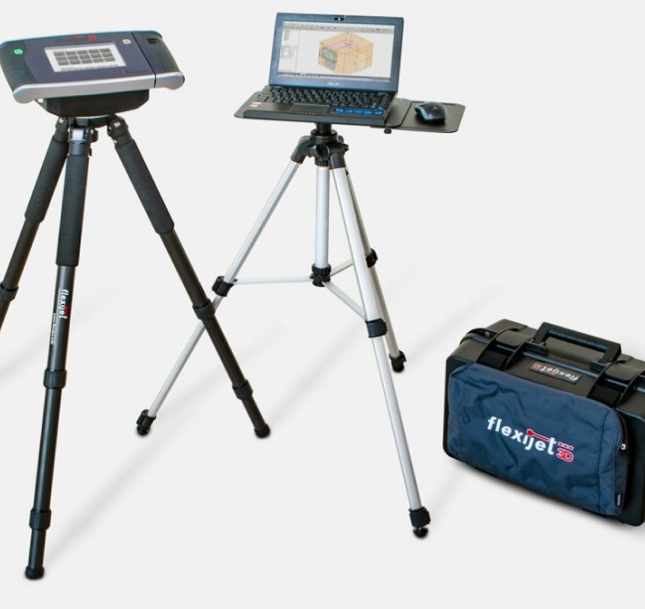
Industry evolution from 1.0 to 4.0
Before we delve into the reasons; the what, why, and how of Industry 4.0, it’s helpful to first understand exactly how manufacturing has evolved since the 1800s. There are four different industrial revolutions that the world has experienced or is still experiencing today.
First industrial revolution
The first industrial revolution occurred between the late 1700s and early 1800s. During this period, manufacturing evolved from a focus on manual labour performed by humans with the help of working animals to an optimized form of labour performed by humans using water and steam powered engines and other types of machine tools.
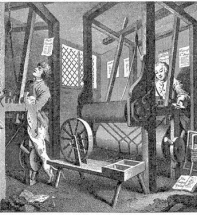
Second industrial revolution
At the beginning of the 20th century, the world entered the second industrial revolution with the introduction of steel and the use of electricity in factories. The introduction of electricity allowed manufacturers to increase efficiency and helped make factory machinery more mobile. During this phase, mass production concepts like the conveyor belt were introduced as a way to increase productivity.

Third industrial revolution
Beginning in the late 1950s, the third industrial revolution slowly began to emerge, as manufacturers began to incorporate more electronic and eventually computer technology into their factories. During this period, manufacturers began to experience a shift that placed less emphasis on analogue and mechanical technology and more on digital technology and
automation software.
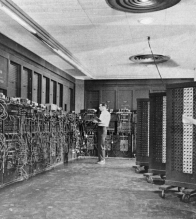
Fourth industrial revolution – Digitization
In the last few decades, the fourth industrial revolution, known as Industry 4.0 or Digitization, has appeared. Digitization is taking the emphasis on digital technology from the last decades to a whole new level with the help of Internet of Things (IoT) interconnection, real-time data access and the introduction of cyber-physical systems. Digitization offers a more comprehensive, interconnected approach to production. It connects the physical with the digital and enables better collaboration and access between departments, partners, suppliers, products and people. Digitization allows business owners to better control and understand every aspect of their business and creates the prerequisites for them to use
current data to increase productivity, improve processes and drive growth.
The biggest task of Industry 4.0 and Digitization is to eliminate human error wherever possible. The point is that communication and data transfer is done directly between computers, and not to be overwritten and thus the possibility of error appears.
With our system, the production process – measurement begins in the computer and with digital technology, CAD/CAM software, and CNC machines, it remains inside the computer until the assembly of the finished product. In this way, the possibility of error is reduced to a
minimum.
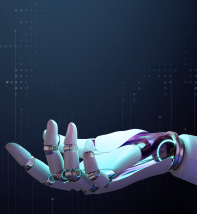
IIoT Basic Concepts and Glossary
- Enterprise Resource Planning (ERP): Business process management tools that can be used to manage information throughout an organization.
- IoT: IoT stands for Internet of Things, a concept that refers to connections between physical objects such as sensors or machines and the Internet.
- IIoT: IIoT stands for Industrial Internet of Things, a concept that refers to the connections between people, data and machines related to manufacturing.
- Big data: In translation, “big data” refers to large sets of structured or unstructured data that can be compiled, stored, organized and analysed to reveal patterns, trends, connections and opportunities.
- Artificial Intelligence (AI): Artificial intelligence is a concept that refers to the ability of computers to perform tasks and make decisions that would historically require some level of human intelligence.
- M2M: This stands for machine-to-machine, and refers to communication that takes place between two separate computers via wireless or wired networks.
- Digitization: Digitization refers to the process of collecting and converting various types of information into a digital format.
- Smart factory: A smart factory is one that invests in and uses technology, solutions and Digitalization approaches.
- Machine Learning: Machine learning refers to the ability of computers to learn and improve themselves through artificial intelligence, without being explicitly told or programmed to do so.
- Cloud Computing: Cloud computing refers to the practice of using interconnected remote servers located on the Internet to store, manage, and process information.
- Real-time data processing: Real-time data processing refers to the capabilities of computer systems and machines to continuously and automatically process data and provide results and insights in real or near real time.
- Ecosystem: An ecosystem, in terms of manufacturing, refers to the potential connection of your entire operation – inventory and planning, finance, customer relations, supply chain management and manufacturing execution.
- Cyber-Physical Systems (CPS): Cyber-Physical Systems, also sometimes known as cyber manufacturing, refers to a Digitization-enabled manufacturing environment that offers real-time data collection, analysis and transparency into all aspects of a manufacturing operation.
Now that we have a better understanding of the fundamental concepts associated with digitization, we are ready to explore more deeply how smart manufacturing can revolutionize
the way we run and grow our business.
Advantages of adopting the Industry 4.0 model – Digitization
Digitization spans the entire product lifecycle and supply chain – design, sales, inventory,
scheduling, quality, engineering, and customer and field service. Everyone shares
informed, up-to-date, relevant views of production and business processes – and much richer and more timely analytics.
Here is a short, non-exhaustive list of some of the benefits of adopting the Industry 4.0 model
for your business:
INCREASED COMPETITIVENESS
To stay competitive, you need to have systems and processes in place that will allow you to provide the same level of service (or better) to your customers and clients that they could receive from your competition.

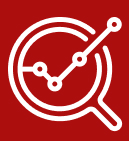
GREATER PREDICTION
Predictive analytics, real-time data, internet-connected machines and automation can help you be more proactive when it comes to solving potential maintenance and supply chain management issues.

BETTER EFFICIENCY
Companies that invest in Digitization solutions can increase efficiency, drive cross- departmental collaboration, enable predictive and prescriptive analytics, and enable people, including operators, managers and executives, to more fully leverage real-time data and intelligence to make better decisions as they manage their day. daily duties.
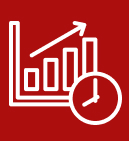

EXPENSE REDUCTION
Digitization helps you manage and optimize all aspects of your production processes and supply chain. It gives you access to the real-time data and insights you need to make smarter, faster decisions about your business, which can ultimately increase the efficiency and profitability of your overall business.
For whom is Digitization the right choice?
How do you know when or if your company should invest in Digitization? Whether you have a more or less complicated space that needs quality measurement, or you want to be able to measure your clients’ spaces independently – we can offer you a whole range of services.
If you are able to check off most of the items on this list, it is probably safe to start evaluating Digitization technology and solution providers and allocating the resources needed for implementation:
- You’re in a particularly competitive industry with a lot of tech-savvy players
- It is difficult for you to fill vacant positions in your organization
- You want better visibility across the entire supply chain
- You want to identify and fix problems before they become bigger problems
- You want to increase the efficiency and profitability of your entire organization
- You want everyone on your team to have informed, up-to-date, relevant views of production and business processes
- You want richer and more timely analytics
- You need help in digitizing and designing information
- You want to improve customer satisfaction and user experience
- You want to improve the quality of the product or keep the quality of the product intact
- You want a more integrated enterprise resource planning system that encompasses not only inventory and planning, but also finance, customer relations, supply chain management and manufacturing execution
- You want a consistent and flexible view of production and business operations tailored to specific areas or users in your organization
- You want real-time insights that help you make better, faster decisions about your business every day
Partial content source: epicor.com, Wikipedia
Our flexijet 3d brings many advantages of Digitization. Contact us for more information and cooperation opportunities
Whether you have a more or less complicated space that needs quality measurement, or you want to be able to measure your clients’ spaces independently – we can offer you a whole range of services:
We invite you to contact us for more details about our service and products – we will be happy to provide you with all the answers you need.

